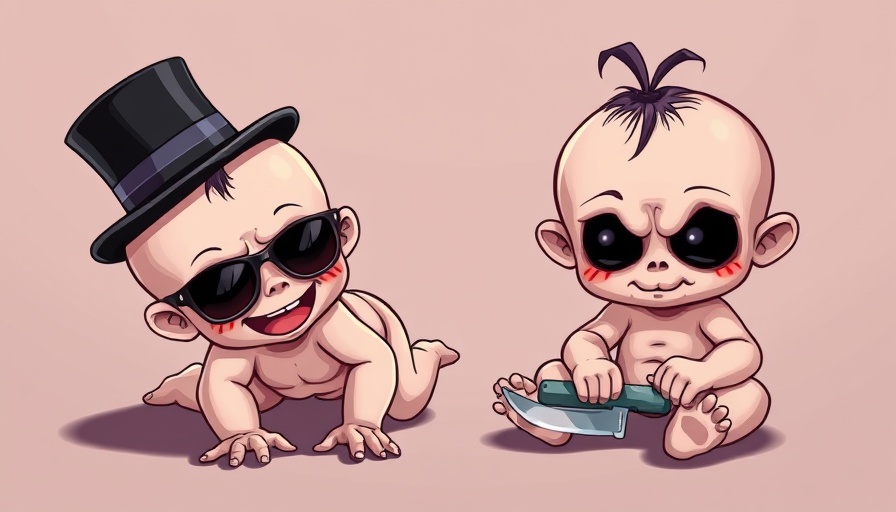
Dissecting the Uplift of Cuteness: A Shift in Consumer Trends
The advent of Spirit Halloween's new line of Horror Babies invites a compelling conversation surrounding the commercialization of cuteness in the context of horror, particularly through the lens of nostalgia. The concept, heavily inspired by the cultural impact of Baby Yoda, encapsulates both a business strategy and a deep psychological inclination toward what is known as “cuteness aggression.” This phenomenon illustrates our primal instinct to nurture even the most terrifying figures when they appear in adorable forms. This blend of horror and cute is strategically crafted to attract diverse demographics, appealing both to dedicated horror fans and to a broader audience, including parents seeking playful yet edgy collectibles for their children.
Examining Nostalgia: A Bridge Between Generations
By offering a fresh take on horror icons like Chucky, Ghostface, and Leatherface, Spirit Halloween effectively taps into the reservoir of childhood memories held by those who grew up watching these films. This nostalgic approach connects older generations with younger ones who might be discovering these characters for the first time. It cultivates a shared experience that transcends age, ultimately fostering a poignant intersection of comfort and horror that is sure to resonate across a family.
A Striking Contrast: The Juxtaposition of Fear and Cuteness
Chucky as a dolly evokes a sense of both humor and alarm: a toy that is simultaneously frightful yet endearing generates a discourse on the safety of children while engaging in seemingly innocent play. This complicates the emotional landscape around childhood toys and childhood fears while highlighting society's ambivalence toward horror as a genre. Experts cite that this juxtaposition can serve as a powerful tool in marketing, attracting those who find comfort in blending the familiar with the disquieting.
The Implications for the Collectible Market: An Adaptive Landscape
The emergence of the Horror Babies line speaks to a broader evolution across the collectible market—one where nostalgia-driven products consistently gain traction among consumers. As individuals increasingly seek items that resonate emotionally, collectibles that recall childhood memories or feature beloved characters are not merely valued for their aesthetic, but for the stories and shared cultural experiences they hold. This trend further emphasizes a monumental shift where emotional engagement often dictates purchasing behavior.
Looking Ahead: Predicting Future Trends in Crossover Collectibles
As observed with the impact of the Horror Babies, further brand adaptations that hybridize conflicting ideas may become prominent. Expect more products designed to blend genres—such as horror and adorable motifs—across various sectors. Innovations that embrace these genres may enhance marketing strategies while appealing to a wider consumer base, ultimately reshaping our cultural perceptions of collectibles.
The blending of horrors and adorables is not only a playful gimmick but also a substantial commentary on our society’s relationship with fear and nostalgia. As we approach the Halloween season filled with various marketing releases, remember to create spaces for playful nuance in our consumption and collection habits. It’s a thrilling reminder that the juxtaposition of sweet and creepy can forge unexpected connections that resonate more deeply than we might anticipate.
 Add Row
Add Row  Add
Add 




Write A Comment